“Oh, the good ol’ hockey game is the best game you can name.”
If you’re reading this, you probably agree with Stompin’ Tom Connors. This game, our game, is unparalleled. Hockey combines grace and athleticism that only the most premier of individuals can attain. It incorporates a grit and physicality very few on this planet can stomach. It thrives on the precision and deft ability to control elements otherwise uncontrollable to most people.
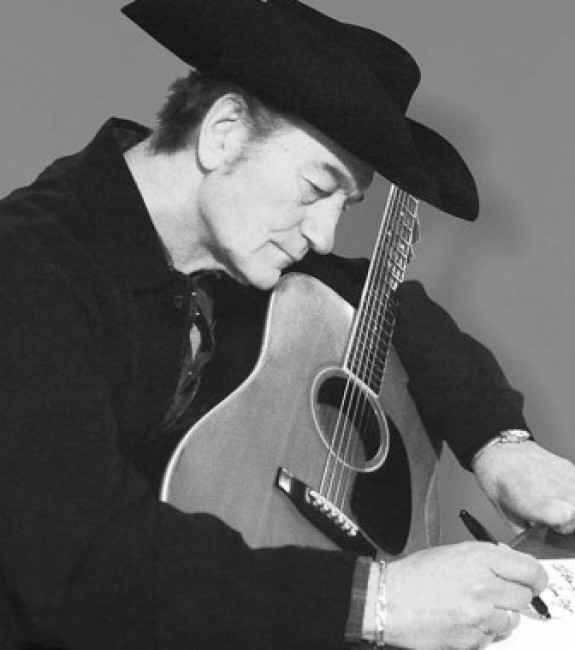
You play 82 grueling games in 185 days just to have the chance to keep fighting for another two months. There is no out-of-bounds escape. There is no run-down-the-clock. You don’t get out of your seat until the Zamboni hits the ice.
What truly makes the game special, however, is its connection to the past. Watching hockey for many brings back memories of long days and nights skating on frozen ponds, lakes, and rivers, fighting the elements and playing ‘Game 7’ until they couldn’t any longer.
Teams and rivalries that are alive and well now have been healthy for over a hundred years. The names of legends past hang brilliantly in the rafters of some of the most legendary sports venues on the planet. Loyalties have been passed on from generation to generation.
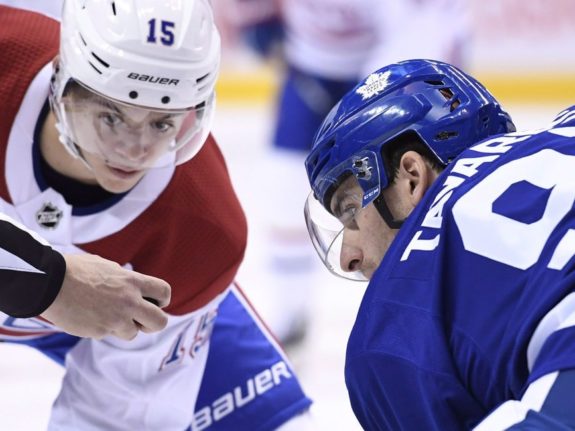
While all of this may be true, our game is not perfect. Having cherished roots is a nice feather in your cap, but it is not a prestige upon which to live. As the world changes, so must this game we love.
What are some changes that could propel our game through the next decade and beyond? Thinking outside the box can lead us to some potential conclusions.
Changes to the Draft and Unrestricted Free Agency
As it currently stands, the Stanley cup is awarded somewhere during June 10-15. Typically, within 10 days, the NHL Draft occurs. Following that, the unrestricted free agency (UFA) signing period begins on July 1. This two-week stretch is among the busiest of the hockey calendar, and there isn’t even a game being played. For many, this is the most enjoyable time of the year. It can be improved, however.
In the days and weeks leading up to the draft, there is always much speculation about what player movement we will see among the league’s teams. The perceived scuttlebutt is no doubt partially true, but it cannot be ignored that many of the league’s insiders have a vested interest in fans tuning in, clicking and absorbing their content in any way possible.
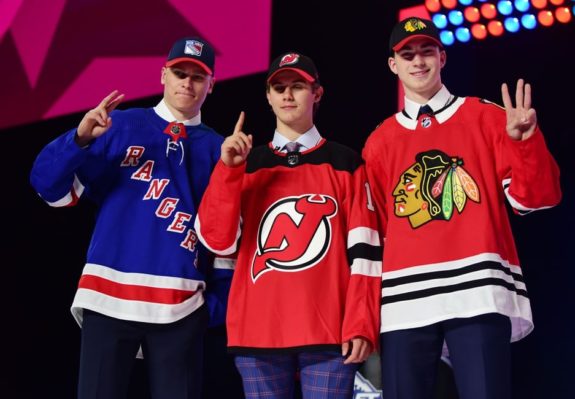
While often regarded as a major trading post, the NHL Draft- at least Round 1- rarely lives up to the billing. While there may be much talk, many drafts, like this past one, see little or no movement.
Everyone loves a hockey trade. Speculating the winner, repercussions and subsequent moves is the favourite past time of many a pundit. Having these moves happen in conjunction with a marquee NHL event in the offseason is a major boon for the product. A simple change could help dramatically increase the likelihood of moves.
What often holds up trades around the draft is teams not knowing exactly what their lineup will look like 10 days after the draft. With the UFA signing period beginning July 1, some teams who may have interest in pursuing one of the big fish may be hesitant to pull the trigger on a trade in favour of pitching their city and team to a free agent.
If the league decided to switch things around and have free agency be the first major event after the Stanley Cup is awarded, it could significantly shift the focus of player movement to the draft.
Once the season is finished, teams can begin in earnest speaking with free agents. The league would have a controlled last possible date for the Cup to be handed out, like, say June 10. It was awarded this year on June 12, so such a date would not be a stretch. The draft could then be arranged to occur every year over the last weekend of June.
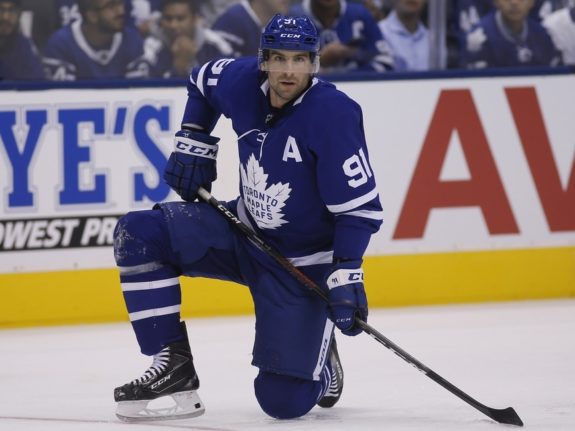
Let’s look at how this would work in 2020. Once the Stanley Cup is given on June 10 to the Buffalo Sabres (I kid, I kid), teams would then have three days to prepare for free agent interviews. Interviews would begin on June 13 and commence for just three days. There’s really no need to stretch things out longer than that. Free agency could then begin each year on June 16. In 2020, that would mean there is a gap from the opening of the signing period to the June 26 draft of 10 days.
In those 10 days, most of the major signings will be settled and teams will have a much better idea of who they are going into the following season. There will be teams excited about their new signings and teams scrambling after being rejected. Everyone would then convene on the draft floor with glaring needs and picks and players to spend.
It almost feels like the perfect storm for trading. In any event, there would be even more stories to follow going into the draft. While such an adjustment would certainly affect UFAs, restricted free agents (RFAs) would be affected. This system can also be improved.
Adjusting Restricted Free Agency
On July 1 of this year, the Montreal Canadiens rocked the hockey world by signing RFA Sebastian Aho to an offer sheet. While they ultimately were not successful, the move sparked conversations and built interest during the summer, something the NHL should always be very interested in.
Offer sheets have the potential to be an excellent tool to build your lineup. The main hangups with them are fear of retribution from victimized general managers and fear of paying unknown compensation.
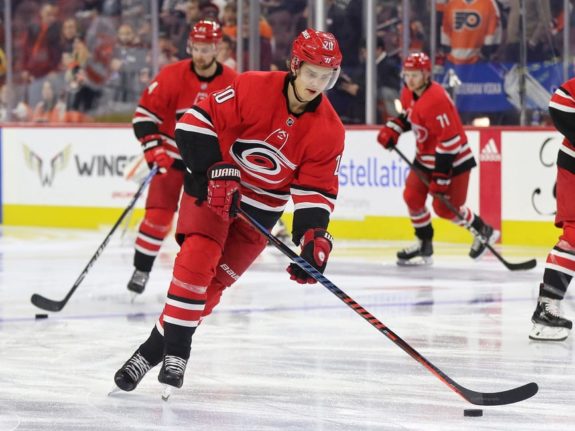
Firstly, this overwhelming fear the GMs apparently operate in is laughable. The players they are managing are among the most competitive humans in the universe and yet their bosses are terrified of competing? They worry that rival managers may try to offer sheet one of their players when the opportunity arises. Perhaps they should also advise their teams to try to not score because, dagnabbit, they may try to score on us!
Secondly, the compensation can cause understandable worry. This is especially true with the parity in the league today.
Look no further than the Ottawa Senators. They were one goal away from a berth in the Stanley Cup Final in 2017. After falling to the Pittsburgh Penguins, they still felt very good about where they were as a team. That being the case, they opted to go all-in on Matt Duchene, trading prospects and picks to load up for a big run. The result? The Senators have been gutted and were forced to decide between trading Brady Tkachuk or the pick that became Bowen Byram to the Colorado Avalanche. And Duchene? He’s spending the next 2,555 days picking and pucking in Nashville with the Predators. THW’s own Josh Bell recently regaled us with the worst trades in Senators history, of which this one tops the list.
The current compensation for offer sheets is as follows:
For the most part, the compensation seems fairly easy to swallow. Teams would certainly give up a first, second and third for the likes of Nathan MacKinnon, Sean Monahan or Aleksander Barkov.
Where it becomes challenging is when multiple first-round picks are involved. The trend in the NHL today is for premier young players to be paid $10 million or more annually. Teams may feel they have a short window and may not be comfortable giving up multiple first-round picks in consecutive years. What can be done to make the move easier for attacking teams?
If the NHL adopted the schedule discussed earlier, free agency would commence before the draft. This would afford an offering team the luxury of knowing where one or more of their outgoing picks to the defending team would be. If they knew, for example, that their upcoming first-round pick would be 27th overall, they would no doubt feel more confident moving it rather than hoping that next season’s first-rounder was in that range. For this to work, teams would be required to make decisions on whether to match the offer or not in less time, say, 48 hours max.
This would build major intrigue for that June 16-24 period. Both offering and defending teams would have some tough decisions to make. Both would also have a better idea of what exactly they were giving up and receiving, further making it easier to make the call. What else can be done to stimulate offer sheets while not penalizing defending teams?
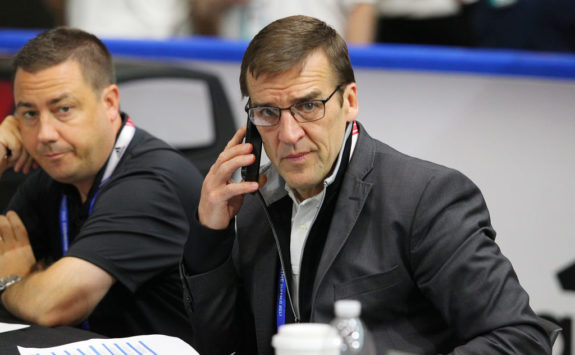
Employ a tool used in MLB and the NFL: compensatory picks.
If a team were to sign a player to a deal worth $10,558,589 or more and be required to pay four first-round picks, give them the option to replace one of the four first-round picks with a compensatory first-round pick at the end of the round that would go to the defending team instead. Whether or not the offering team used their pick or opted for the compensatory pick could be decided right up until they were on the clock at the draft. The offering team would then only give up three of their own picks, knowing the exact level of one of them. Meanwhile, the defending team would still receive four first-round picks. This seems like a balanced way to encourage offer sheets, while at the same time still awarding full compensation to the team losing the player.
The NHL offseason gets very little respect. In recent years, the NBA especially has been characterized by massive player movement, altering the league year by year. When major impact players are moved, it builds interest and turns the product into must-watch, must-discuss material. In the entertainment industry, having the public discussing your product is essential to survival. Manufacturing enthusiasm in the offseason is something the NHL should absolutely be heavily invested in.
Creating Home Ice Advantage
“Home ice advantage” is an oft-used term in NHL circles. In today’s game, it is often associated with having the last line change and having the home crowd either cheer you on or get on the referee. In essence, there is little that sets one rink apart from another.
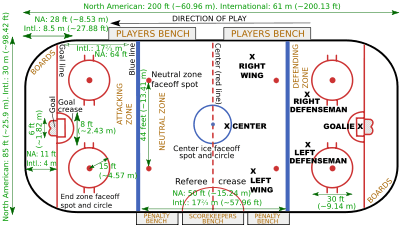
A league that I have always found interesting for its individuality in venue is MLB. Each park has its own unique atmosphere as well as a strategy to play. The ‘Green Monster’ at Fenway Park in Boston and the expansive foul territory at Oakland-Alameda County Coliseum in Oakland alter the way teams play and bring a characteristic of playing baseball in that city.
The NHL could really stand to alter their playing surface to establish a greater home-ice advantage. The current dimensions for NHL rinks are 200 feet by 85 feet. International rinks are approximately 200 feet by 98 feet. Understandably, other areas of the ice surface are also different. NHL rinks have two feet less space from the end boards to the goal line, six more feet from the goal line to the blue line and eight fewer feet in the neutral zone.
If each team was given the option to configure their home rink between the parameters of NHL and International rinks, they could build their respective teams around where they play.
Suppose you have a team that plans to have more stretch passes and requires more space in the neutral zone. Maybe you plan to grind behind the net in the offensive zone and want to give your players more room to work. Perhaps you draft speed on the wings and want your barn to afford your burners more room to work. Each arena would be characterized by a particular style that they would presumably have perfected, leading to true home-ice advantage.
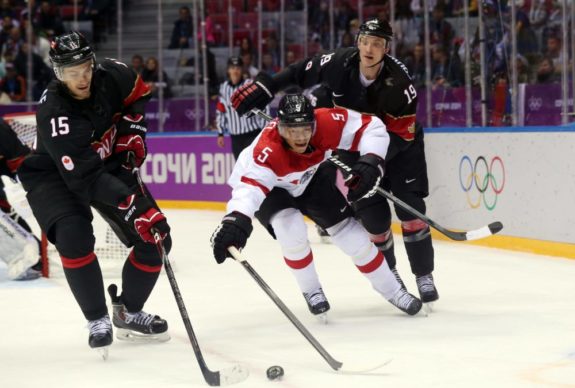
The possibilities are endless. And oh, the storylines we could follow. Your team underperformed last season and has a new coach? He likes this rink configuration. How will things change? You have a crop of rookies with offensive skills and your team thus plans to move the blue lines back to give them a bigger offensive zone. Will this move put you over the top? The experimentation and innovation that could spring from such a change would be legendary.
One of the most challenging times of the season, regardless of where your team is in the standings, is the dog days of winter. The stretch from December through March can become daunting, especially if your team is out of the playoff race. Some spice can be added to this part of the season as well.
Adding a Mid-Season Tournament
In many ways, the NHL and NBA are very similar. Both leagues play 82-game regular seasons, both have best-of-seven playoff matchups, and both run simultaneously during the year.
The NBA has recently toyed with the idea of implementing a mid-season tournament. Could such an idea be a fit for the NHL?
One of the main issues that springs to mind is the number of games already being played. Playing an 82-game regular season before embarking on a potential two-month playoff run leaves little room for practicing, never mind a separate tournament.
The simple solution is to lower the number of games played. With or without a tournament, many fans would no doubt be on board with such a move to, perhaps, 70 games. The owners would never agree to limit the chances they have to make mone…errrr…watch their team play, so adding a tournament could help to fix that. How would such a tournament work?
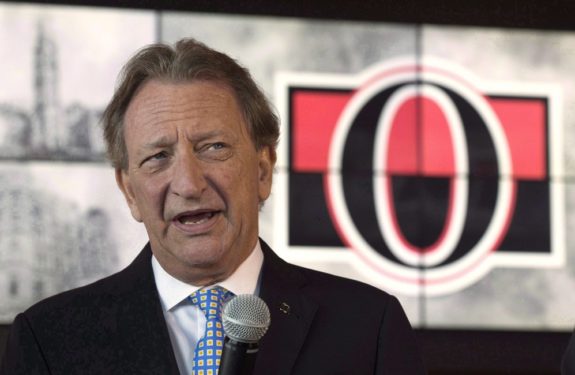
The tournament would run over three weeks starting at the beginning of January. Each team would battle to be the champion of their division. To get the fans on board, each trophy could be named after a hockey legend from that division. The Metropolitan would win the Lemieux Trophy, the Central would win the Hull Trophy, the Pacific would win the Gretzky Trophy and the Atlantic would battle for the Hasek Trophy, of course.
The matchups would be simple. Each team would play a best-of-three series based on the top seed playing the lowest seed and so on. In the Central, having only seven teams, the top seed would get a first-round bye. The higher seed would get to pick which two of the possible three games they get to play at home.
What incentive would there be for teams to participate in such a tournament? I mean, besides the glory of liting the hallowed Hasek Trophy, why would teams get up for these games?
In addition to the trophy, the winning team would be awarded points in the standings. The winner could potentially end up playing nine games so the award would need to be significant. An award of 10 points for winning the tournament would be a major enticement for teams to push to win it.
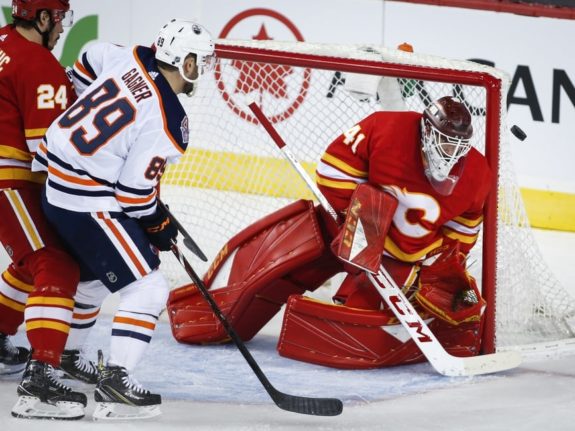
Maybe a team got off to a bad start to the season but is starting to find their stride in early January. While they may be behind in the standings, a tournament win could propel them to a playoff berth. With the parity in the league today, setting yourself apart in such a tournament would carry extreme value.
The NHL has longed to create stronger rivalries and more competition between divisional foes. This longing is the major influencer behind the less-than-popular current playoff format. Introducing divisional tournaments would only serve to increase these rivalries.
Such a tournament would bring other auxiliary changes. The bye-week system currently in place in the NHL brings frustration to fans. Having half of the league off for a week at a time, while necessary, is not ideal. Having the tournament span two and a half weeks would enable those that were eliminated early to get a break of sorts while those who won would receive less rest but the point bonus.
In preparation for such a critical stretch of games, teams would look to bolster their rosters in the days leading up to the tournament. A second trade deadline could be made. This deadline, however, would be much more interesting than the trade deadline we are used to.
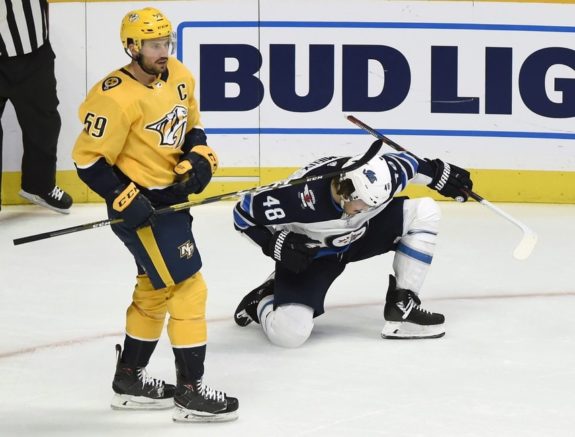
Presently, the trade deadline is a predictable mix of teams trading expiring contracts for draft picks and making minor league moves. Very rarely do we see big hockey trades.
This new deadline would be all about “the now.” Pulling the trigger on a move could mean the difference between you finishing 10 points ahead or 10 points behind your division rival. You make moves to help you win now and target teams that feel they have no chance to win and would be better served to take the time off.
These tournaments could provide a real shot in the arm for hockey fans. As discussed, early-January hockey can be exhausting to watch for some. Even if your team is buried in the standings, this tournament would only require them to get hot for a short period, almost like a mini playoff.
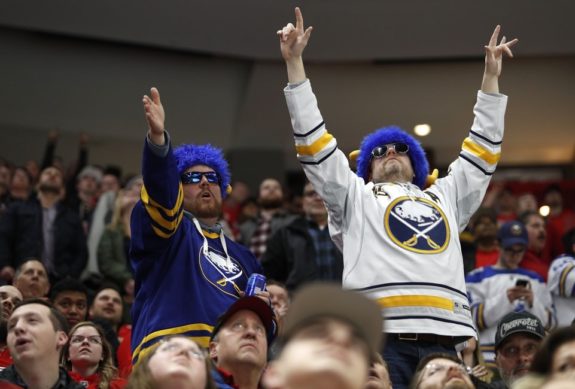
Such tournaments are not without precedent. European soccer has employed numerous mid-season tournaments for years. Say what you want about soccer, it’s a monster in the sports world.
While the NFL is currently considered the big dog of North American sports, the NBA is not far behind. In fact, in the next decade, we could see a monumental shift to the NBA becoming the model league. If mid-season tournaments are something on their radar, the NHL should certainly be considering it.
Our game is great. It truly is. The skill and ability that oozes from young players entering the league are at an unprecedented level. The league sees strong ownership across the board. After breaking ground and hitting a home run expanding the league to Las Vegas, we are now on the precipice of the NHL’s 32nd team in Seattle.
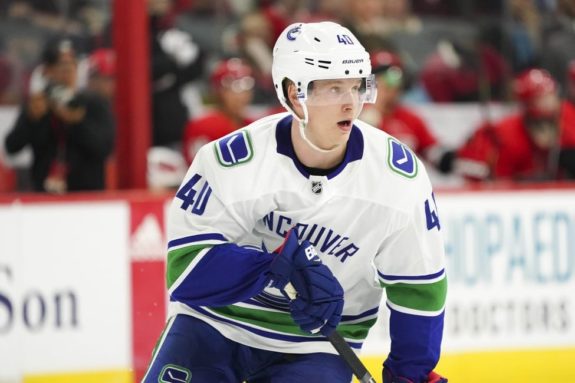
With attention spans dwindling, fans clamor for more action. Even in a high-paced action sport like hockey, fans want more watchability and intrigue. Reshaping how player movement works will enhance anticipation for free agency and the draft that has not been present for some time. Making it easier for teams to build through the RFA market will make the offseason more noteworthy for the sports world in general. Opening up rink design parameters would build storylines each season and lead to increased innovation in the game. Finally, adding a mid-season tournament could really provide both fans and teams with the adrenaline rush both need in the month of January.
Are all of these changes possible? Sure. Likely? No.
In any event, it will be interesting to see how the NHL unfolds over the next decade and beyond. With advancements in player tracking and analytics, the quality of the game will only increase. Let’s hope the league stays progressive so we can continue to say “the best game you can name is the good ol’ hockey game.”
Enjoy more great hockey history and ‘Best of’ posts in the THW Archives